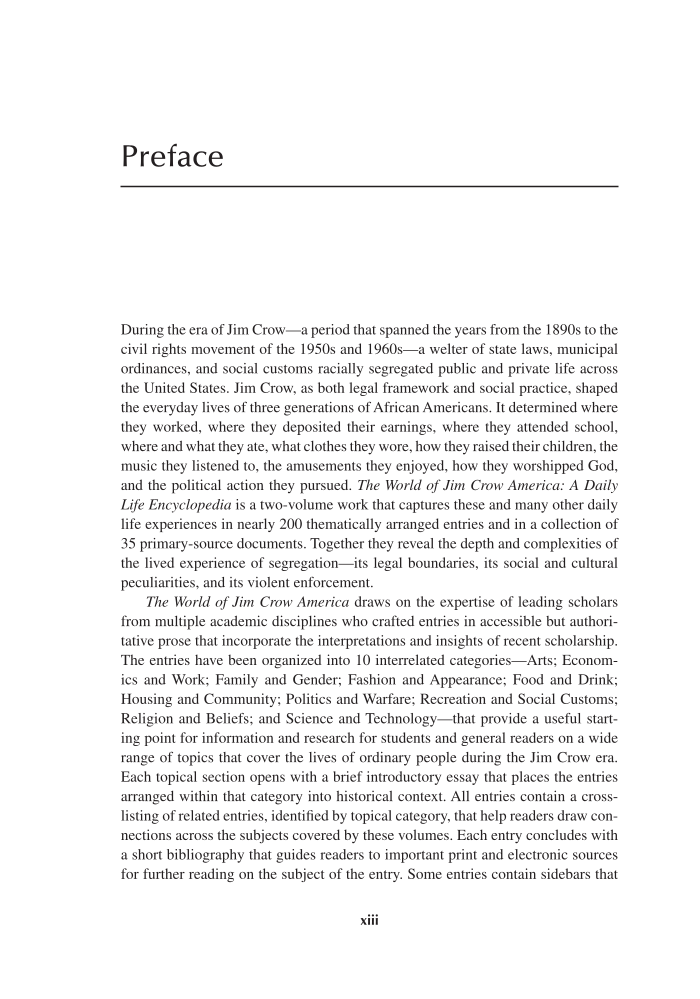xiii Preface During the era of Jim Crow—a period that spanned the years from the 1890s to the civil rights movement of the 1950s and 1960s—a welter of state laws, municipal ordinances, and social customs racially segregated public and private life across the United States. Jim Crow, as both legal framework and social practice, shaped the everyday lives of three generations of African Americans. It determined where they worked, where they deposited their earnings, where they attended school, where and what they ate, what clothes they wore, how they raised their children, the music they listened to, the amusements they enjoyed, how they worshipped God, and the political action they pursued. The World of Jim Crow America: A Daily Life Encyclopedia is a two-volume work that captures these and many other daily life experiences in nearly 200 thematically arranged entries and in a collection of 35 primary-source documents. Together they reveal the depth and complexities of the lived experience of segregation—its legal boundaries, its social and cultural peculiarities, and its violent enforcement. The World of Jim Crow America draws on the expertise of leading scholars from multiple academic disciplines who crafted entries in accessible but authori- tative prose that incorporate the interpretations and insights of recent scholarship. The entries have been organized into 10 interrelated categories—Arts Econom- ics and Work Family and Gender Fashion and Appearance Food and Drink Housing and Community Politics and Warfare Recreation and Social Customs Religion and Beliefs and Science and Technology—that provide a useful start- ing point for information and research for students and general readers on a wide range of topics that cover the lives of ordinary people during the Jim Crow era. Each topical section opens with a brief introductory essay that places the entries arranged within that category into historical context. All entries contain a cross- listing of related entries, identified by topical category, that help readers draw con- nections across the subjects covered by these volumes. Each entry concludes with a short bibliography that guides readers to important print and electronic sources for further reading on the subject of the entry. Some entries contain sidebars that
Document Details My Account Print multiple pages
Print
You have printed 0 times in the last 24 hours.
Your print count will reset on at .
You may print 0 more time(s) before then.
You may print a maximum of 0 pages at a time.
















































































































































































































































































































































































































































































































































































































































































































































































































































































